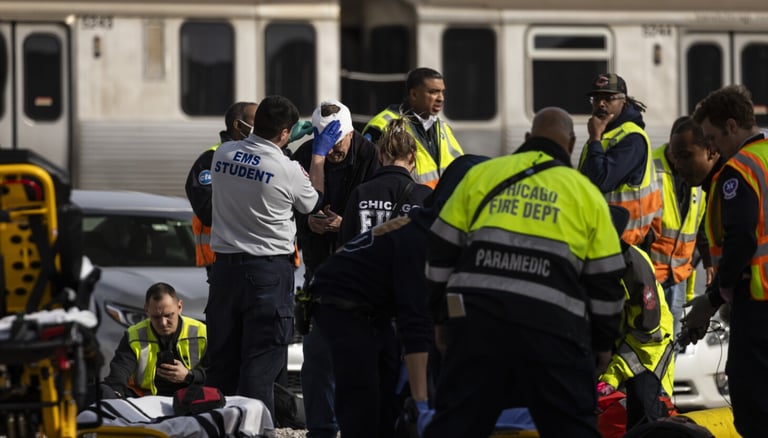CTA Yellow Line Crash Injures 38; Operator's Alcohol Level, Brake Flaws Under Investigation
October 24, 2024
Joseph T. Murphy, a lawyer for some injured passengers, criticized the CTA for a lack of transparency regarding the operator's alcohol use.
In the aftermath of the crash, four lawsuits have been filed against the CTA, alleging that the incident was preventable.
CTA officials confirmed compliance with federal drug and alcohol testing regulations, although the operator had not been randomly tested since starting in August 2023.
Despite the operator's alcohol consumption, NTSB officials stated that ongoing investigations have not found evidence that his actions contributed to the crash.
The crash led to 23 injuries, with 15 individuals refusing medical care, prompting the CTA to suspend Yellow Line service for over a month.
Preliminary findings from the NTSB revealed a design flaw in the train's braking system, noting that the train's braking distance was significantly shorter than that of newer systems.
Prior to the crash, the operator reported issues with the train's brakes, stating, 'train not stopping,' although he claimed to have experienced no problems earlier in the route.
On November 16, 2023, a Chicago Transit Authority (CTA) Yellow Line train collided with a snowplow during scheduled training, resulting in injuries to 38 people, including the train operator.
The National Transportation Safety Board (NTSB) is conducting an ongoing investigation, which may take 12 to 24 months to complete, to determine the crash's causes and provide recommendations.
The train operator, who had only three months of experience in the position, remains employed by the CTA but is currently out of service pending investigations.
Federal investigators confirmed that the operator had a blood-alcohol level of 0.06% shortly after the crash, exceeding the federal limit of 0.02%.
NTSB Chair Jennifer Homendy stated that the operator appeared engaged and in control before the collision, which occurred at a speed of 54 mph, just below the maximum limit.
Summary based on 7 sources
Get a daily email with more US News stories
Sources

CBS Chicago • Oct 24, 2024
CTA operator had alcohol in system during 2023 Yellow Line train crash
AP News • Oct 24, 2024
Chicago train operator had alcohol in his system during 2023 crash, officials say
Chicago Tribune • Oct 24, 2024
Operator in CTA Yellow Line crash had alcohol in his system, NTSB report finds
Chicago Sun-Times • Oct 24, 2024
CTA train operator had alcohol in system during 2023 Yellow Line crash, NTSB finds - Chicago Sun-Times